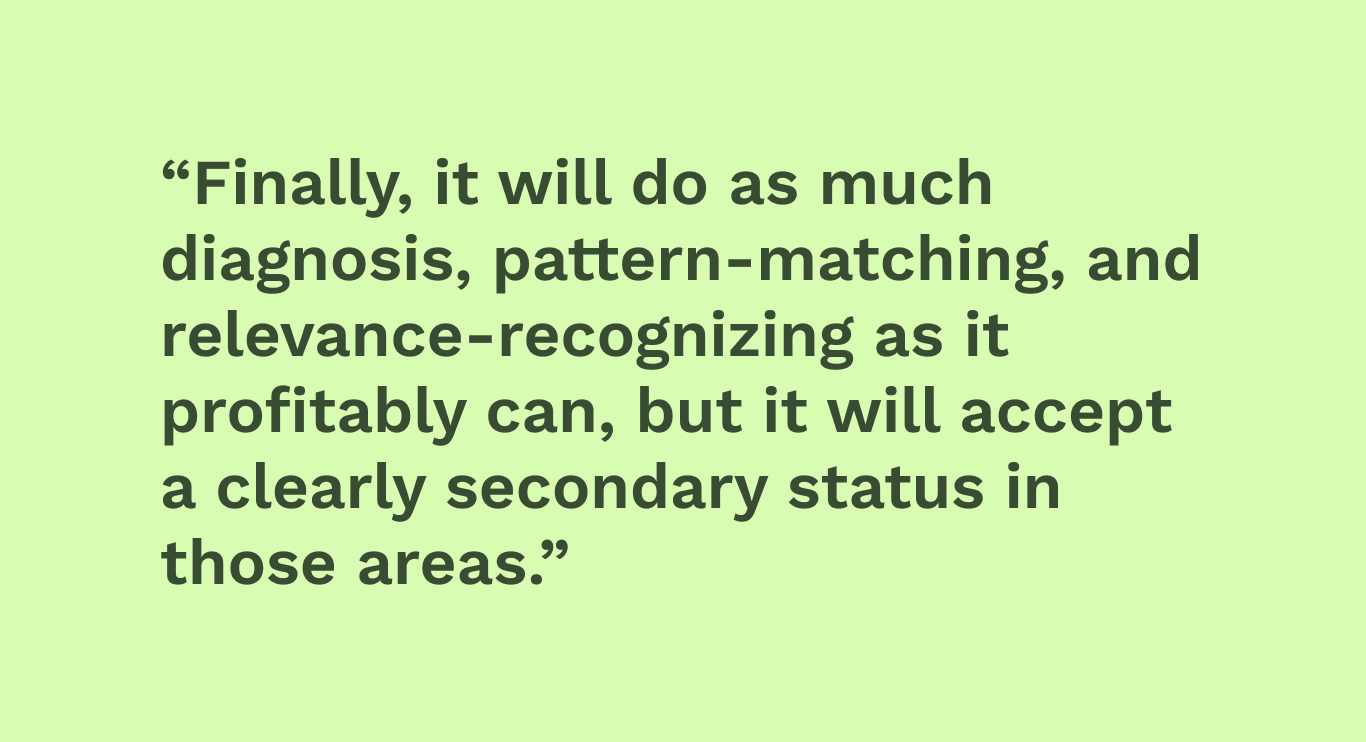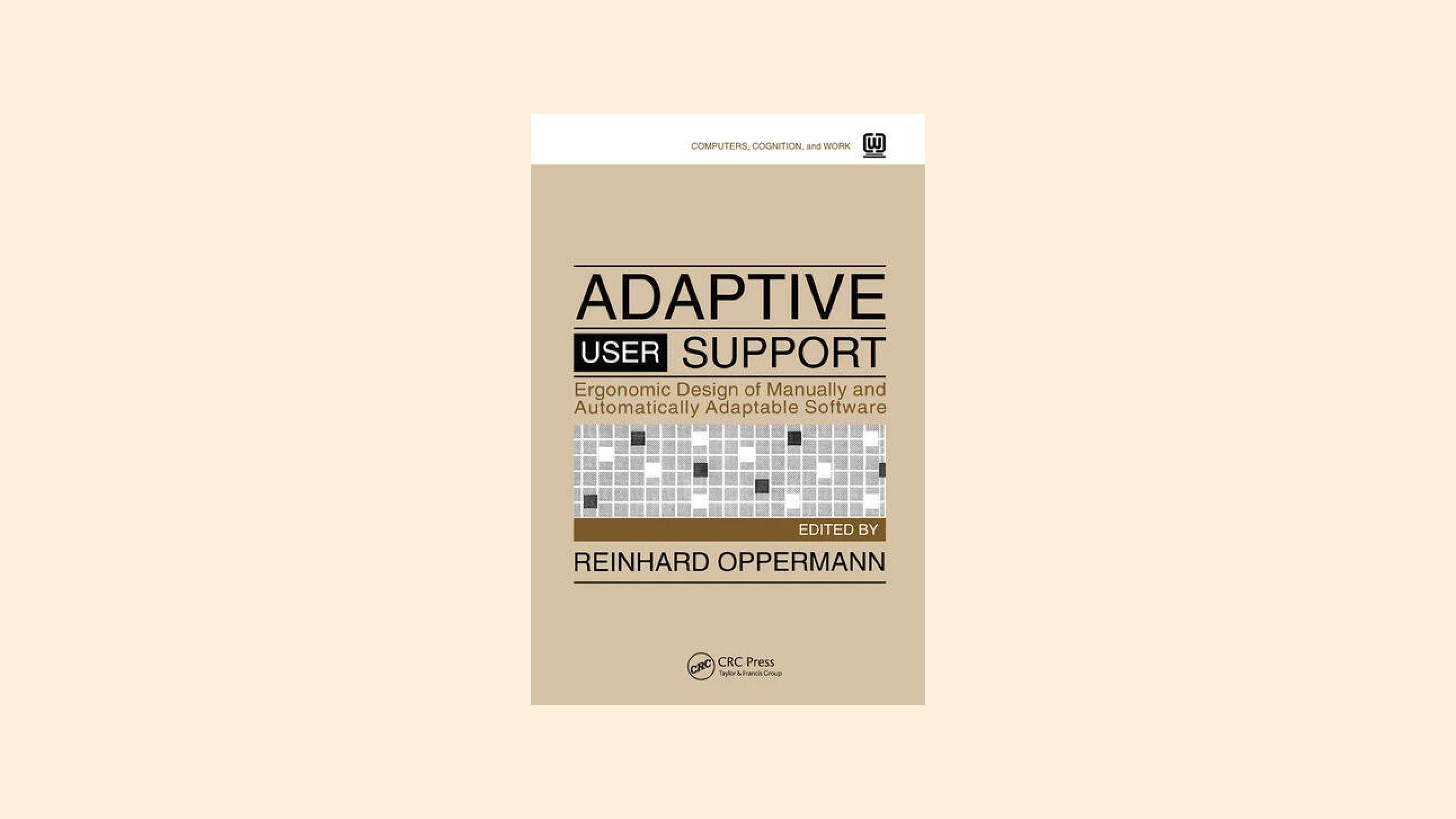It’s (still) summer, which is the perfect time for a reading list.
Lately, as I continue working on adaptive design for the Material system at Google, I’m noticing an intersection between adaptive thinking and generative AI discourse. I think the “create-anythingness” generative AI appears to possess has renewed the impulse to make the interface ultimately adaptable, customizable, and individual.
UX design, which is often encouraged to feel cordoned-off from larger design discourse, is rippling with its own hopes and desires for the future of the interface, stoked by new technological developments.
When these moments arise, I think it can be helpful to remember that a flexible, dynamic interface is a vision designers and technologists have been chasing since at least the beginning of mechanized production. Adaptability to the individual—their needs, their wants, their intentions, their abilities, their...context—is a persistent vision that’s engaged a long line of thinkers and practitioners.
With that in mind, I thought I’d put together a brief list of some texts that I think trace that lineage and may help round out the contemporary, renewed discussion around adaptive and individualized design, and remind us why it’s been so elusive: not because we haven’t envisioned it fully enough, but because ultimate flexibility may require a level of rigor, planning, and systems thinking that simply hasn’t been prioritized.

As We May Think
Vannevar Bush
There’s a lot to be said about this piece (most of which has already been said) but the aspect I’d like to focus on is the crux of interface design that Bush acknowledges here: the pursuit of transforming an ever-expanding body of information into knowledge, and the best ways to go about doing that. The memex was a vision of an associative interface that was ultimately subjective, even while clinging to the physicality and metaphors of the physical workstation that we still see in interfaces today. This piece pops up again and again throughout the history of the interface generally and adaptive interface specifically.

Man-Computer Symbiosis
J. C. R. Licklider
Among his famous predictions or premonitions about the future of computing lies Licklider’s 1960 paper Man-Computer Symbiosis which puts forth a model for an adaptive (indeed “symbiotic”) interface between human and computer and a description of the computer’s role in this relationship that both affirmed the current statistical model of artificial intelligence and supposes that the computer will maintain a “clearly secondary” status to its operator.
The paper is a quick but dense read that opens up a lot of potential rabbit holes for your curiosity. For one thing, you’ll pick up on a lot of narrative notes about computers’ already-quick performance at mathematical tasks that reverberate in today’s AI discourse. Elsewhere, Licklider has interesting ideas delineating automation and participation in computing, and some of the structural problems that need to be addressed to achieve the latter.
The Interface
John Harwood (Video: Google SPAN 2015)
Okay, this one is also a book, but I embedded a video of a session from the author at SPAN 2015. I saw his talk the autumn after I moved to New York, going over some of the material covered in the book. It captures a specific moment in history where interfacial design took a turn toward the corporate that we now take for granted. I think this text is important not just as part of the history of interfacial thought, but as a look at one aspect of what’s kept the interface away from true dynamic flexibility until now. The book came out in 2016, but I’m placing it here because it’s specifically concerned with the period of time between 1945 and 1976 (and that period’s consequences moving forward).
Augmenting Human Intellect + The Mother of All Demos
Douglas Engelbart
I’m gouping together a written and video piece here, too. Engelbart’s writing in Augmenting Human Intellect (which directly addresses Bush’s ideas from earlier) sets up not only the research program behind what’s shown in Mother of All Demos but produced the demonstration itself. Together, these two works set up foundational interaction concepts while reifying Bush’s vision of associative informational workflows. Direct manipulation and navigation through these associative connections allowed personalized design to take a big step forward.

Adaptive User Support
ed. Reinhard Oppermann
Released in 1994, Adaptive User Support built on prior thinking to create a framework for personalization in software interfaces. Distinguishing between adaptable (customizable) and adaptive (automatically accommodating) features, it extends into possible software applications—via “Flexcel” and “HyPLAN”—that combine these ideas, more than a decade before virtual assistants would first be productized.

Adaptive Hypermedia
Peter Brusilovsky
Here I’ve linked a 2001 paper by Brusilovsky that builds on two prior papers from 1996 and 1998, surveying research and techniques for developing systems that adapt to a user’s “goals, preferences, knowledge,” and needs. By the time Brusilovsky wrote this, the pursuit of personalizing the interface had turned mainly toward “developing specific variations of known methods and techniques and in developing practical systems.” The paper provides a good breakdown of the state of adaptive thinking at the time of writing, particularly in the diagram I pasted above.
...And more
Of course this isn’t the end of the line for thinking around adaptive interfaces. Nor is it a comprehensive list. If you get through this post and want more, consider catching up on not just specific techniques and programs for adaptive and personalized design, but some criticism as well. James Bridle’s New Dark Age, for example, (which he also discussed on Design Notes) explores how hyper-individualized software, when paired with the illusion of associative informational flows, can induce a state of “incomprehension.”
On the lighter side, you can read about how large-scale design systems are approaching adaptive presentation, like the dynamic color system in Material Design.
The takeaway for this reading list should be that, since the beginning of computing, a personalized, helpful, and facilitative interface has always been the goal.
At every stage of computing history, technologists have been theorizing and testing out ways to take the next step toward that vision. To make technology more human and to bring humans more in touch with themselves through technology.
What will your contribution be?





